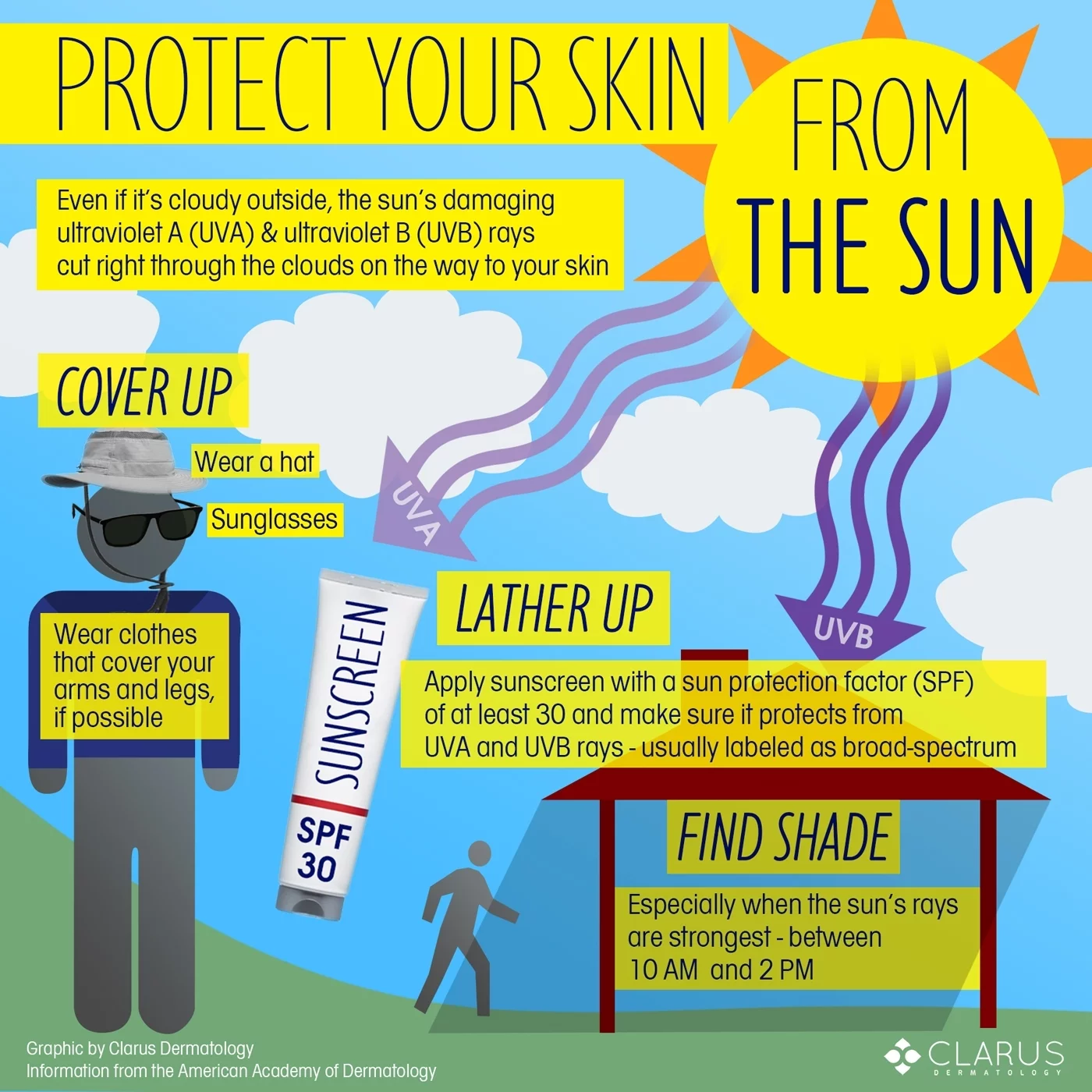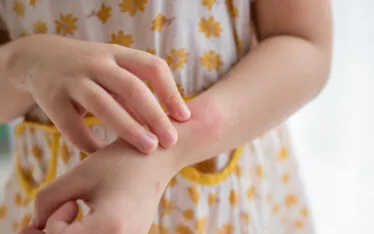Skin care for newborns and infants

This morning while enjoying a leisurely cup of coffee and reading my journals I came across an ad for a ‘luxury’ skin care line created for infants by a dermatologist. It contained 10(!) products. Aside from being overly complicated, and I’m sure overly priced, it didn’t follow best-practice guidelines for pediatric skin care. In short it was utterly ridiculous. As a father and dermatologist I felt that I should respond with what I actually do to take care of the skin of my baby. What follows are product and care recommendations that my wife and I use on our own kid. They are the result of synthesis of years of training, many books, studies, best-practice guidelines and expert opinion. You will find them simple, cost-effective and easy. I hope that you find them useful.
Bathing
No soap
If I could isolate one area where patients are most incorrect it would be regarding soap/bodywash use both for themselves and their children. Generally, everything that a newborn or infant comes into contact with, including feces and urine, is water soluble. This means that water is all that’s required to clean the skin. In fact, unless there is visible greasy soiling of the skin, or the child has reached the age where their armpits/groin/feet have started to smell, there is no reason to wash the skin with anything other than water.
Frequency
We wash baby once or twice per week despite her propensity to spit up. If my mother is visiting we might bath her every other day to reduce, but not eliminate, the likelihood of being judged.
Washing the hair
Water, again, is what I would recommend. A bland shampoo can be used once weekly.
What I like: Aveeno Baby Wash and Shampoo, Vanicream Free and Clear Shampoo (great for adults too!)
For children who have cradle cap (scaling of the scalp, also known as seborrheic dermatitis) gentle shampooing once or twice a week, or use of an oil (baby oil or refined coconut oil) with gentle brushing of the scalp is all that is needed to achieve reasonable control.
Moisturizing
Next to bathing correctly, moisturization practices are absolutely essential. Babies don’t care if they’re greasy. Take advantage of this fact to keep them well moisturized. What do we use? Vaseline. Plain, thick, greasy Vaseline. Do not get the scented version. I would also recommend getting Vaseline-brand product (with the blue top). It costs $1 more but it’s not made in China and it doesn’t have off smells to it. We apply it twice daily to all body surfaces including the face/scalp. Simply put there is no moisturizer that is better at preventing skin barrier water loss, nothing is cheaper, nothing else has as few ingredients. Petroleum jelly is not absorbed; it sits on top of the skin as a completely inert mixture of long-chain hydrocarbons.
Aquaphor is simply expensive petroleum jelly with a few other ingredients thrown in. Thinner moisturizers and lotions simply do not eliminate skin drying (measured by a metric called transepidermal water loss (TEWL)) for long enough. You could use a bland lotion like Vanicream, Aveeno, CeraVe, Eucerin or Curel but you would need to apply it 4 times daily for optimal effect.
As baby gets older I would still recommend Vaseline twice daily. If this becomes ‘normal’ the odds are good that your child will continue to apply it for the rest of his/her life. That’s a good thing. If the child complains at some point that Vaseline is too greasy then I would recommend one of the moisturizers above applied at least twice daily.
Baby Wipes
Dermatitis related to preservatives like methylchloroisothiazolinone is on the rise in infants. I looked at quite a few major brand baby wipes before settling on Seventh Generation Baby Wipes. Here are the ingredients: Water, cocoamidoproply pg-dimonium chloride phosphate, sodium benzoate, quillaja saponaria wood extract, citric acid, aloe barbadensis leaf extract, tocopheryl acetate. The wipe material used in this product is a blend of wood pulp, polypropylene and polyethylene.
The second ingredient is the main ingredient in this wipe. It’s a surfactant related to the common ingredient cocamidopropyl betaine which is frequently used in shampoos. This class of ingredient is responsible for helping remove greasy, or nonpolar, substances from the skin. It’s also the main ingredient that can cause irritation in both your baby’s bottom and your hands. All moist wipe products need to contain a preservative of some kind. This wipe contains sodium benzoate which is a food-grade preservative. The quillaja and aloe extract probably add little benefit but may have slight benefit for improving skin barrier function. The citric acid and the tocopheryl acetate, a form of vitamin E, are there to preserve and reduce oxidation respectively.
All-in-all it’s got few ingredients and no common allergens. It also has a dry hand-feel after using it. It doubles as a reasonable cleansing agent for your hands too if you’re in a place without a sink. I would only caution you to keep some hand lotion for yourself in your child’s diaper bag since mommy and daddy hand-dermatitis is very common.
Diaper Rash
If you struggle with this, like we did, then read on. First, what is diaper rash? It’s skin breakdown and overgrowth of yeast that live in the GI tract usually as a result of excessive moisture and skin irritation from urine and feces. Second, how do you treat it?
1) Use super absorbant diapers. If you’re using cloth diapers you’ll need to stop. I recommend Pampers Swaddlers (full disclosure: my brother is a diaper engineer for Procter and Gamble, the company that makes Pampers). That being said we tried Luvs (hated the smell) and found it substantially equivalent. I cannot say whether Huggies are better or worse but I suspect they are equivalent. The main point is that you need to use a modern, well-engineered diaper that is very absorbent.
2) Frequent changes. If things are bad on the backside then go to at least hourly changes until they improve. This will also allow you to apply topical treatments more frequently.
3) Consider avoiding wipes. Changing in a laundry or kitchen sink and then using water to cleanse the backside can help reduce irritation from wipes. Nearly all baby wipes are made to strip grease and oil (it’s why your fingers feel dry after using them) so they can lead to skin breakdown on their own. Make sure you dry the skin thoroughly after washing with water.
4) Keep the diaper area very dry. Baby wipes will leave moisture behind. We use the new diaper itself to mop up that extra moisture. Some people like fans. No matter what you do it is essential to get the diaper area very dry prior to putting on creams/ointments/new diaper.
5) Skin barrier creams. If there is only mild rash then you can try Vaseline with each change (ensure the skin is dry). Vaseline is simply acting as an inert skin barrier in this case. For more advanced cases I would recommend going straight to Triple Paste. Avoid Boudreaux’s Butt Paste due to a common allergen called balsam of Peru and a lower zinc oxide concentration. Desitin Maximum Strength is a good alternative. These products all contain zinc oxide which is the active ingredient. Zinc oxide is a broad spectrum, non-specific antimicrobial compound that also acts as a gentle skin drying agent. It should be applied thickly with each diaper change.
If the above measures fail to control the rash you should see a board-certified dermatologist immediately. A number of other conditions can be considered for rashes in this area and you need an expert to help figure out the correct cause.
Care for Mommy and Daddy
One final note. I see a lot of ‘new mom and dad’ hand-dermatitis. This is due to frequent hand washing when caring for young children. It’s important to take care of your hands as well when you have a young one at home. Here are a few simple tips:
1) Minimize hand washing. If you just changed a pee diaper do you really need to wash with soap? I would argue no. You could use a baby wipe or nothing at all. If you really wanted you could use an alcohol hand sanitizer on yourself (avoid using these on kids!). I recommend Avagard. It’s the best hand sanitizer that I’ve ever used. It’s what we use at our office as well. However, make sure you DO NOT apply it to your child.
2) Keep lotion by every sink. Keep a bottle of bland lotion (see recommendations above) by each sink. When you do wash your hands you should make it a habit to immediately dry them and then apply a thin coat of lotion to your hands.
3) Keep lotion in the baby bag. A small container of Vanicream Lite is a great option. Again, this isn’t for baby, but it’s for you everytime you think about it. It should be the final step after changing a diaper and washing up: apply lotion to your hands.


